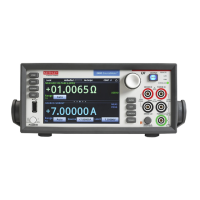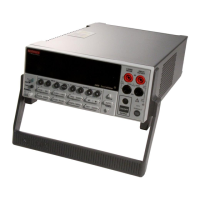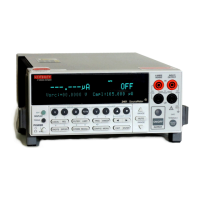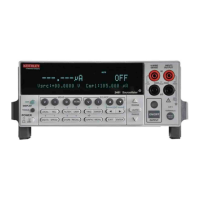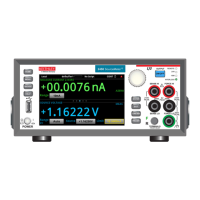Interactive SourceMeter® Instrument Reference Manual Section 4: Source-
2461-901-01 A/November 2015 4-23
Filtering measurement data
Filters allow you to produce one averaged sample from a number of measurements. In situations
where you have noise levels that fluctuate above and below the measured signal, this can help you
produce more accurate measurements.
The Model 2461 has two filter options: repeating average and moving average.
The repeating average filter produces slower results, but produces more stable results than the
moving average filter. For either method, the greater the number of measurements that are averaged,
the slower the averaged sample rate, but the lower the noise error. Trade-offs between speed and
noise are normally required to tailor the instrumentation to your measurement application.
If you create test algorithms and you are using the averaging filters, make sure the algorithms clear
the filter memory stacks at appropriate times to avoid averaging an inappropriate set of
measurements.
When the filter is turned on, the filter is applied before any relative offset, math, or limit operations.
Once the relative offset is applied, the next filtered reading has the relative offset applied before it is
reported to the instrument. This means that when you use relative offset, the next reading may not be
zero.
For example, if the filter size is set to 10, 10 internal measurements are stored. Once the tenth
measurement is made, the display or remote interface updates and returns the average of the 10
readings.
For additional information about the order in which math, filters, offsets, and limits are applied, see
Order of operations (on page 4-25).
Repeating average filter
When the repeating average filter is selected, a set of measurements are made. These
measurements are stored in a measurement stack and averaged together to produce the averaged
sample. Once the averaged sample is produced, the stack is flushed and the next set of data is used
to produce the next averaged sample. This type of filter is the slowest, since the stack must be
completely filled before an averaged sample can be produced.

